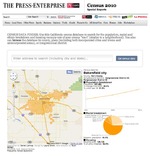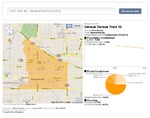Zite raises bar on tablet news reading -- but where's the revenue?
 Friday, March 11, 2011 at 8:47 PM
Friday, March 11, 2011 at 8:47 PM I've been using a new iPad customized news app called Zite and I really like it. 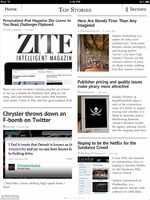 Your personalizezd Zite homepage pulls in a mix of stories matching your preferencesZite blends Flipboard's dynamic feed-driving design and Pandora's thumbs-up/thumbs-down personalization. Zite says its app "is a free, personalized iPad magazine that understands what you like and gets smarter as you use it." That's a perfect description, and for me Zite has surged ahead of Flipboard, FLUD and Pulse as my tablet news reader of choice (although Flipboard's photo presentation is still a draw).
Your personalizezd Zite homepage pulls in a mix of stories matching your preferencesZite blends Flipboard's dynamic feed-driving design and Pandora's thumbs-up/thumbs-down personalization. Zite says its app "is a free, personalized iPad magazine that understands what you like and gets smarter as you use it." That's a perfect description, and for me Zite has surged ahead of Flipboard, FLUD and Pulse as my tablet news reader of choice (although Flipboard's photo presentation is still a draw).
Like those other apps, Zite is simple to set up and use. You first choose any of several dozen top-level categories of interest, then let Zite draw your feeds from Twitter or Google Reader, or both, to seed those content categories. At that point, other sources are layered on as you rate content within those categories. Changing your categories is a snap: When I fired up the app Friday afternoon and saw zero info on the Japanese earthquake, I quickly added "World News" to my mix and, voila, I had intense tsunami coverage. 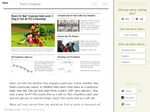 Each story page allows you to give it a thumbs up/down, ask for more content from that source, and share via email, Twitter and FacebookWhat makes Zite really excel is its diversity of content: Rather than giving extra weight to traditional news streams, it pulls from a wealth of rich, trusted and well-crafted content from tons of alternative sources.
Each story page allows you to give it a thumbs up/down, ask for more content from that source, and share via email, Twitter and FacebookWhat makes Zite really excel is its diversity of content: Rather than giving extra weight to traditional news streams, it pulls from a wealth of rich, trusted and well-crafted content from tons of alternative sources.
And the content categories seem to fit iPad users: You are given the choice of Graphic Design & Typography and Web Design & User Experience, Journalism and publishing, Gadets and Technology. As anyone who cares about Graphic Design and Web Design knows, there are huge differences between the two, and thus should warrant separate categories. Traditional media, on teh other hand, would lump them together for convenience or ignorance.
The only real problems I had with Zite are:
- On launch day when the app's servers were smoking from an abundance of traffic (the downside of what appears to have been a great job of prelaunch outreach to ensure the tech journal
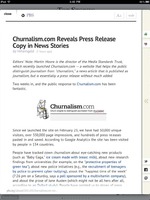 Content comes from thousands of sources, a reminder there's lots of authoritative content outside of traditional medias had stories ready to go). But in the few days since, load times have been fast and clean, with zero crashes.
Content comes from thousands of sources, a reminder there's lots of authoritative content outside of traditional medias had stories ready to go). But in the few days since, load times have been fast and clean, with zero crashes. - A dearth of "local" content, at least for Bakersfield. I know Bakersfield isn't huge, but we learned last week we're the 9th largest city in California, with more than 350,000 people. But when I tried to add a custom feed by using the word "Bakersfield" and a few ZIPs, I got zero results. Terms like "San Francisco" will pull in some content, but it's clear Zite hasn't focused on geographically focused content. And that's OK. But at some point I think Zite nees that "local" flavor if it's going to differentiate itself in becoming a one-stop tablet news reader.
Big question, though, and the same one I have with Flipboard, Pulse and Flud: where's the revenue model? While these are really slick and sticky products, they're free and devoid of advertising.
As a user, I love Zite, Flipboard and Pulse, but as a businessman, each of these apps look like products aching for a sugar daddy like Google or Facebook. At some point, the servers can't pay for themselves.
 Magazines,
Magazines,  Media,
Media,  Technology
Technology 
